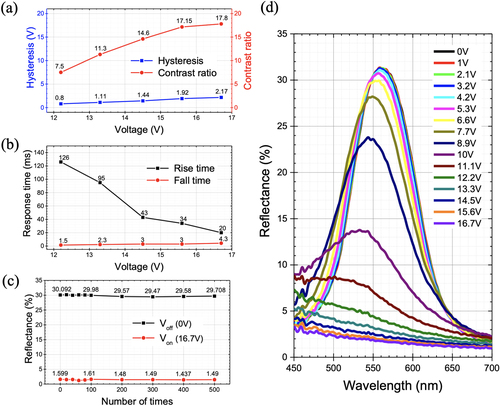Figures & data
Figure 1. (a) RV curve under different cell gap for cholesteric liquid crystal mixture (E7 CLC with 5% RM257) with polymerization temperature fixed at 25°C. (b) RV curve with varying concentrations of polymer monomer (RM257) for cholesteric liquid crystal (E7 CLC) with polymerization temperature fixed at 25°C.

Figure 2. (a) RV curve at various polymerization temperatures for cholesteric liquid crystal (E7 CLC) mixed with 3% polymer monomer (RM257). (b) RV Curve at 25°C for cholesteric liquid crystal (E7 CLC) with varying concentration ratios of polymer monomers RM257 and M1.



